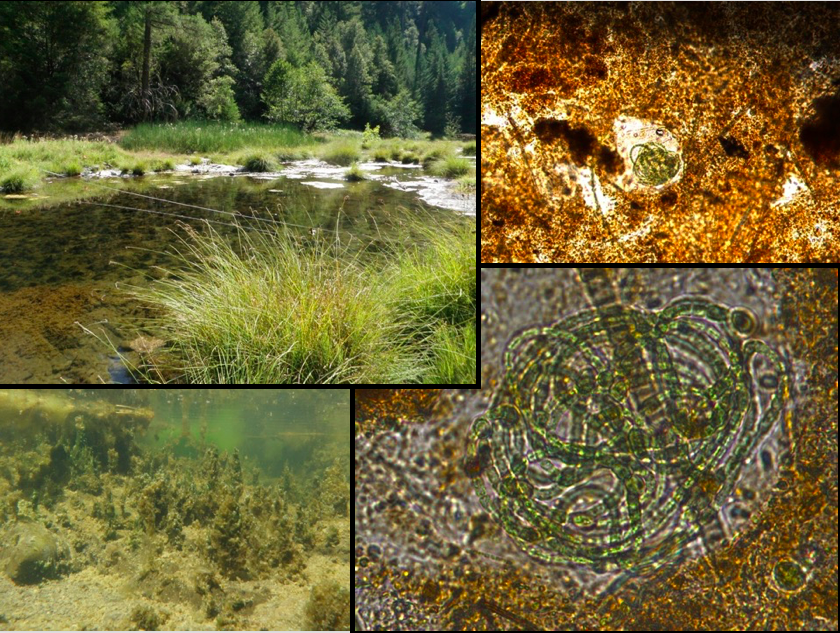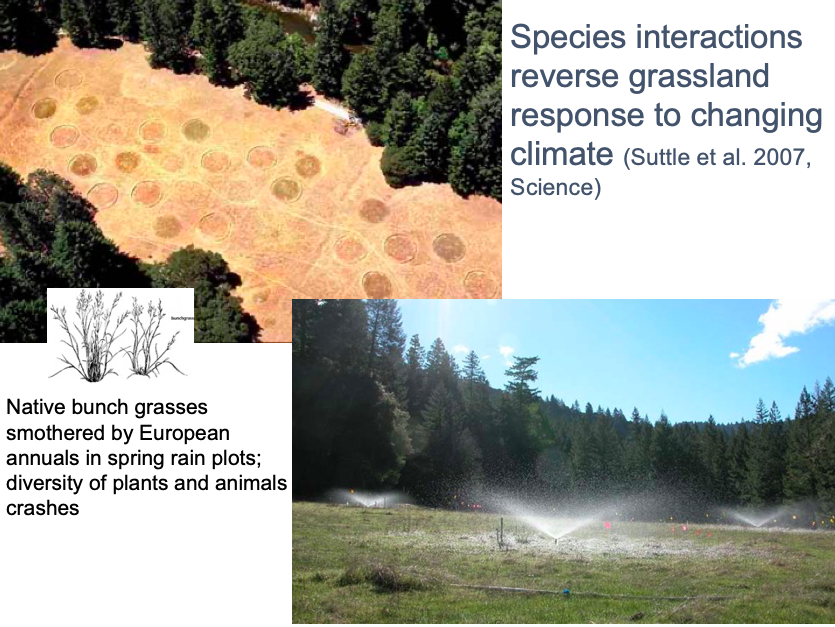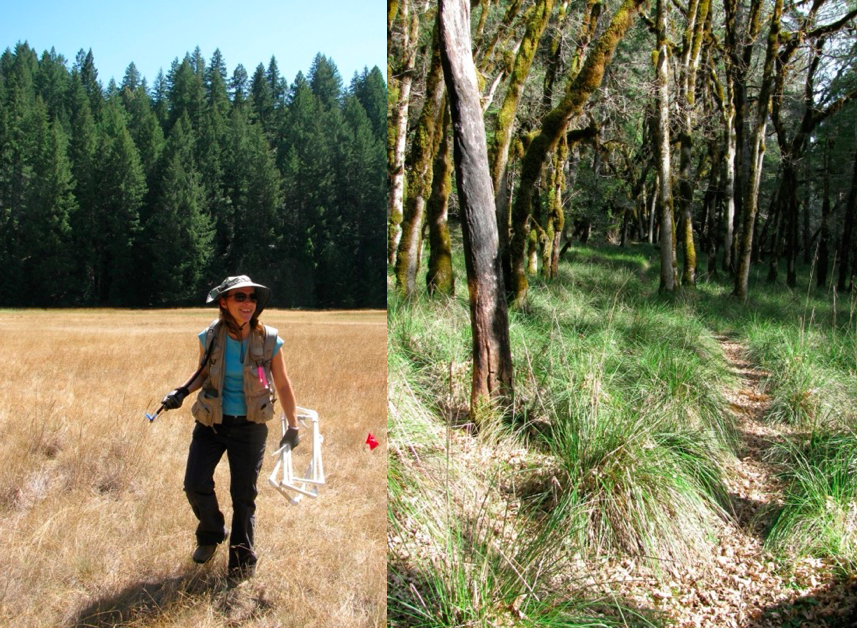Climate tipping points for alternate states in river and meadow food webs
Global change is altering climate regimes across the Earth. Will organisms respond according to their physiological tolerances, or will their fates depend on shifts in interaction webs in which they are embedded? Large, permanently protected natural reserve sites have been critical to the large-scale, long-term experiments needed to address this issue. At the Angelo Reserve, we have studied how climate change will affect food webs in sunlit, mainstem rivers (1988 to present) and in grassland meadow ecosystems (2000 to present). In both habitats, organismal physiology would not explain how precipitation regimes will alter their abundance and performance in food webs.
Seasonal assembly of river food webs
Rivers under Mediterranean seasonality, like the Eel, experience rainy winters followed by summer drought with slowly declining baseflow. Scouring winter floods kill or export attached algae and rockbound invertebrates. Despite this direct damage, summers with large algal Cladophora proliferations (that get meters long) follow scouring winter floods, because of an indirect effect on the food web. Floods scour away an armored algal grazer (the caddisfly Dicosmoecus) that outgrows most predators by early summer. Following winters that lack scouring floods, Dicosmoecus suppress algae from the start of the summer growth season. Because Cladophora hosts highly nutritious diatoms that feed salmonids’ invertebrate prey, juvenile steelhead grow better under conditions that following winter floods. Floods could also sustain better growth conditions for Cladophora through the summer, but evidence at three scales, including an 83-year offshore record of sediment exported from the entire basin (Sculley et al. 2017), suggested that the top-down effects of floods (via predator control) outweighed bottom-up effects of rainy winters on algal growth conditions) in “big algae” summers in the Eel (Fig. 9).
 Fig. 9
Fig. 9
A third food web state of basin-wide concern is arising--one in which cyanobacteria overgrow edible algae in sunlit mainstems. Some of these cyanobacteria can be neurotoxic, and a concerning number of dogs have been poisoned by them in Northern California rivers. They tend to proliferate if summer flows drop below a threshold that keeps mainstem pools hydrologically connected with gently moving, cool (less than 25°C) base flow. If summer baseflow drops below this critical level, warm stagnant conditions stress or kill salmonids, diatoms, and Cladophora, and some heat-tolerant cyanobacteria thrive. Depletion of tributaries or groundwater can trigger these conditions (Figs. 10, 11).
 Fig. 10
Fig. 10
 Fig. 11
Fig. 11
Impacts of climate and invasive annual grasses on meadow food webs
European annual grasses have displaced native perennial bunch grasses over 90% of their former range in California. In a long-term meadow manipulation of rainfall, Suttle et al. 2007 showed that, in a California grassland, species interactions strongly influence responses to changing climate, overturning, within 1 year, the direct climatic effects expected from the contrasting physiologies of annual versus perennial grasses. These largely arose because of the interactions of grasses with nitrogen-fixing forbs in the meadow (Fig. 12)
 Fig. 12
Fig. 12
Hill and Power (in review) discovered two important effects of native perennial bunch grasses on wandering meadow spiders, important predators in meadow food webs. A first direct effect, also documented elsewhere, was that by maintaining cooler near-ground microenvironments, native grasses extended wandering spider abundance and activity later through the hot dry summer, and deeper into adjacent meadows from forest edges. An important effect perennial grasses on spiders was mediated indirectly, through the food web. Unlike annuals, perennial grasses maintain sap flow through the late summer, sustaining leafhoppers that provide "baby food" for spiderlings. Because many of our local wolf spiders tend to shed their hatchlings in August, these soft, small prey may open an ontogenetic bottleneck, increasing the numbers of large spiders that could control herbivores through the following seasons. Our most abundant meadow grasshopper was Melanoplus devastator, which is also an important crop pest. In contrast, annual grasses, by favoring herbivores that can tolerate heat (grasshoppers and exotic katydids), may affect native perennial grasses via "apparent competition” (an indirect food web interaction of prey that share a common predator (Holt 1977)(Fig. 13).
 Fig. 13
Fig. 13
Understanding how food webs work and shift with environmental change should help us restore and sustain the Eel to sustain ecosystem states we prefer.
|

